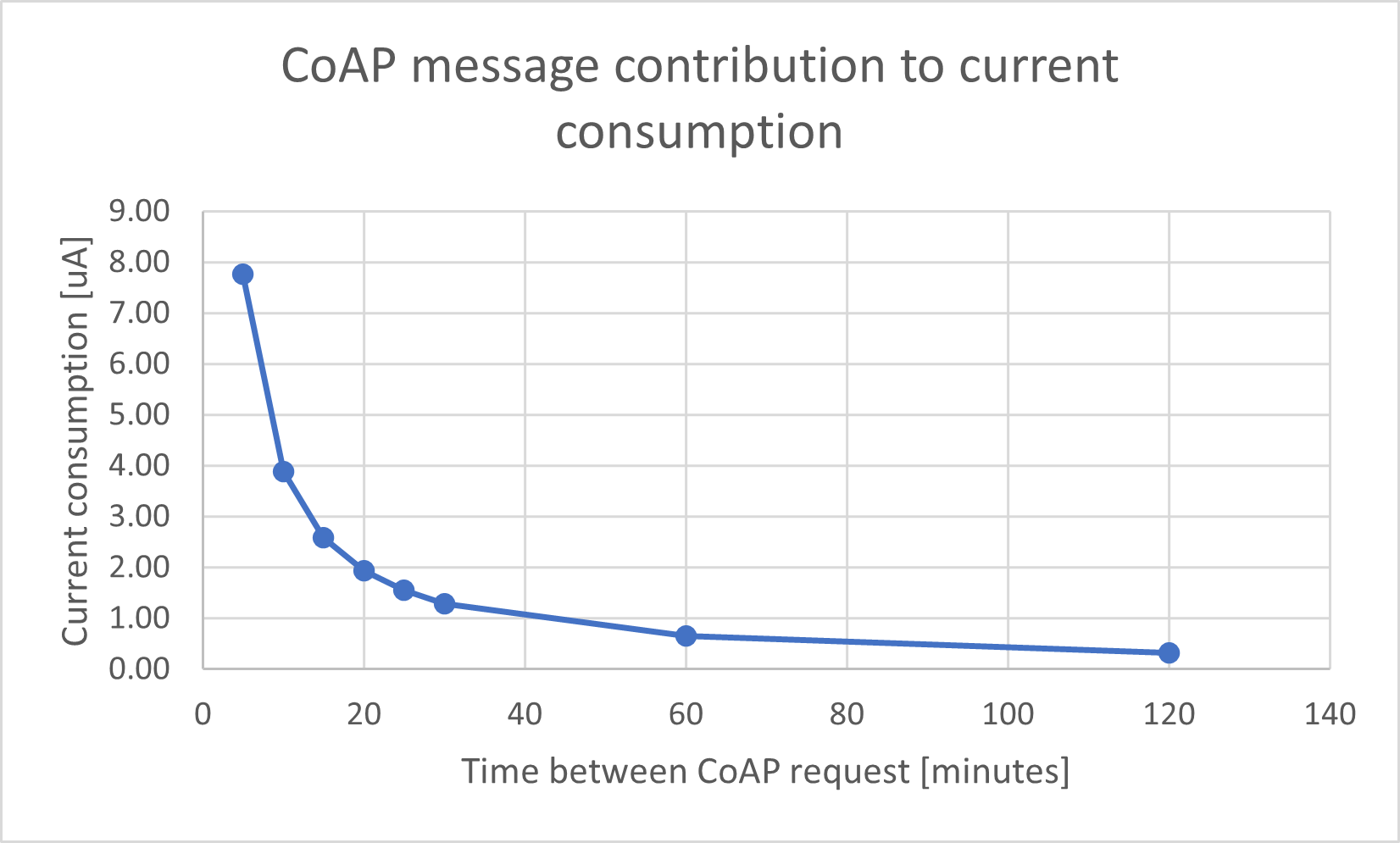Power Consumption¶
Single Channel Node Current Consumption¶
Current consumption in the RIIM single channel variant will depend on which role the node has in the network and what function it’s setup to perform.
Role |
Typical default current consumption |
|---|---|
Border router |
9 mA |
Mesh Router |
9 mA |
Sleeping leaf node |
4.7 µA |
These numbers include the network maintenance functions.
The total current consumption for a sleeping leaf node is depending on what the node activity is: - How often data is sent - How often the module wakes up to do other application tasks (for example, reading a sensor)
For sleeping leaf nodes, the natural way is to implement a client at the sleeping node and a server/resource at the cloud/back-end. A CoAP with request/response will keep the sleeping node awake while its waiting for the CoAP response. Thus, the distance to the server and the channel quality are important parameters for the current consumption coming from CoAP request/responses.
Example:
Current consumption CoAP request + response, one hop.
TX current contribution: 27 mA x 67 bytes x 0.16 ms/byte= 268 mA*ms = 290 µA*S
TX MAC ACK contribution = 27 mA x 30 bytes x 0.16 ms/byte = 64 mA*ms = 69 µA*S
RX current contribution = 8 mA x 240ms = 1920 mA*ms = 1920 µA*S
Total = ~2300 uA*S
To find the average current consumption this number must be divided by the seconds
between transmissions.
Sending every 5 minutes gives an average current consumption of 2300/300 = 7.7 µA
Sending every hour gives an average current consumption of 2300/3600 = 0.6 uA
The current consumption given by CoAP request/responses are added to the 4.7uA active
sleep current to find the average current consumption.

CoAP request/response contribution to current consumption for sleeping leaf nodes¶
Stopped Network - Deep Sleep¶
Network can be stopped completely to avoid any radio traffic at all. To facilitate this, the function Network.stop() can be used. This will ensure that the node doesn’t try to establish or keep a connection to a RIIM network. This will potentially reduce power consumption to a minimum, but will also disconnect the node from the network it may already be in. Keep in mind that other functionality, such as timers, UART etc. may still consume power.
Without using Network.stop(), the node will automatically try to search for and (re)connect to a network. In this search mode the power consumption is much higher than normal operational and battery operated equipment should minimize time in this state.. This feature can thus be used for instance under transport or when a node can’t find any network to connect to for an extended period.
See Radiocrafts application note AN060 - Low Power And Deep Sleep For RIIM for detailed description.